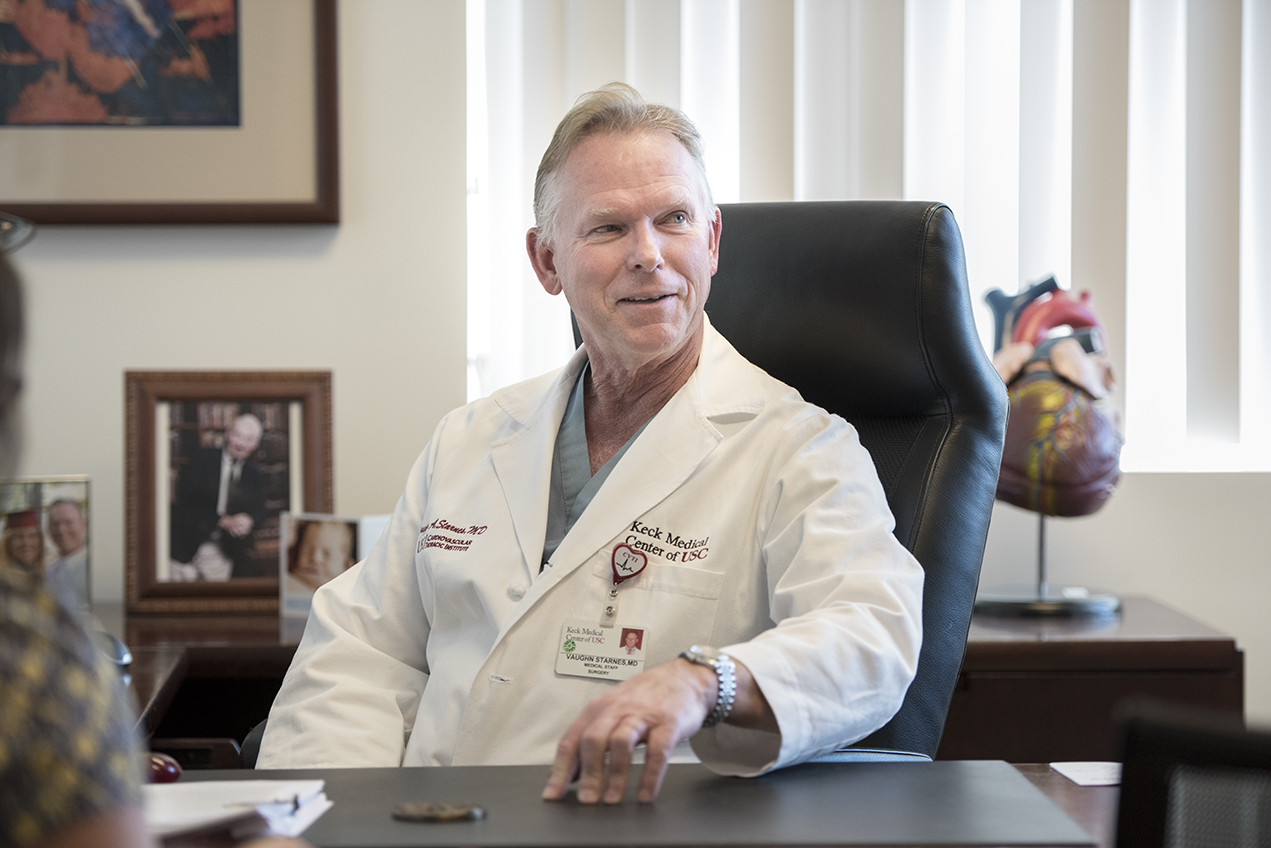Vaughn Starnes, MD, is a Distinguished Professor and chair of the Department of Surgery at the Keck School of Medicine of USC, director of the USC Cardiovascular Institute, and the surgeon-in-chief at Keck Hospital of USC and USC Norris Cancer Hospital. He has been honored to serve as the 100th president of the American Association of Thoracic Surgery. He recently shared his perspective on the benefits of telehealth with HSC News.
In the midst of the current pandemic, health systems around the world have raced to develop new ways to offer care safely. Like many others, USC Surgery — part of Keck Medicine of USC — has greatly expanded its use of telehealth. It’s an obvious step as it allows us to see many patients without them coming to our clinic, which helps us better guarantee the safety of patients who do come in.
I’ve been surprised to hear other doctors talking about telehealth like it’s a stopgap or a necessary annoyance that will mostly fall into disuse once the pandemic fades. While we will of course accommodate any patient who needs or simply prefers an in-person visit, for us telehealth is here to stay.
Telehealth brings high-quality specialty care to more patients
Talk to someone who lives in a rural area about health care and you will hear unsettling phrases like “the cardiac specialist comes to town every other Thursday.” Driving for a few hours and perhaps staying overnight for multiple pre- and postoperative visits is too great a burden for most people. But telehealth combined with just a few necessary in-person visits is much less daunting. Better specialty care for more people is a good goal for us all.
Telehealth offers richer care
Many people assume that a video chat will be less in-depth than an in-person appointment, or that the patient is somehow missing out on something. In fact, we have learned that telehealth patients feel more connected to their care teams and generally report a high level of satisfaction with their care.
In my own video appointments, my patients get the benefit of speaking with me, my trusted physician assistant, and one of my surgical coordinators all at the same time. We can easily go over their imaging results, and they’re able to ask important questions. And importantly, we can see each other. My patients can see that they have my full attention, and I can note important visual cues to the patient’s overall health, such as their bearing and facial expressions.
In our innovative program for lung transplant patients, participants checked in daily via a Bluetoothenabled tablet. They filled out a questionnaire about their symptoms, allowing staff to look at the patient’s health in the moment as well as track trends over time. Patients participating in the pilot study experienced fewer readmissions and shorter hospital stays than the control group. That’s in no small part due to the fact that the daily check-ins allowed our caregivers to spot potential transplant rejections earlier than they normally would have by relying on in-person check-ups alone.
Telehealth encourages patients to take ownership of their health.
I’m sure many other physicians have noticed that patients can be inhibited about coming in or “bothering” staff with what could turn out to be a minor issue, particularly when they know we may be especially taxed by the current pandemic. (For the record: My staff never thinks of it as a bother when it comes to a patient’s health.)
With telehealth, that inhibition is often removed. They feel more comfortable asking about a minor issue that may turn out to be important. In our lung transplant study, the daily check-in also encouraged patients to think about and track their own health metrics. Staffers could even send patients educational videos — and see that they had watched them. A patient who is engaged in his or her care is one who will feel empowered to ask good questions and motivated to get and stay as healthy as possible.
The COVID-19 pandemic has brought a host of challenges to medical centers. But some of the necessary innovations will become long-term blessings. I believe that the discovery and use of telehealth’s full potential will be one of them.
— Vaughn A. Starnes, MD


